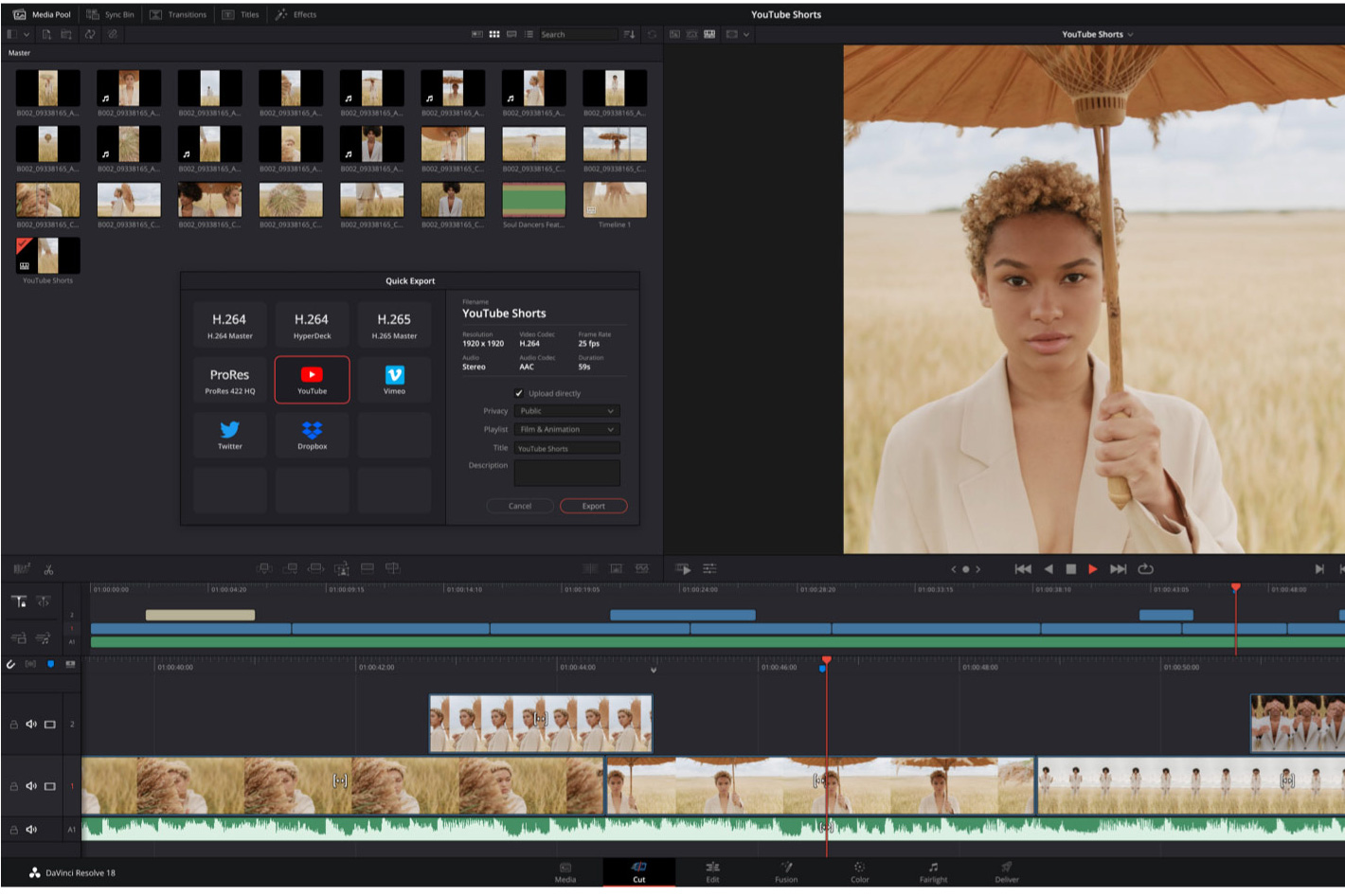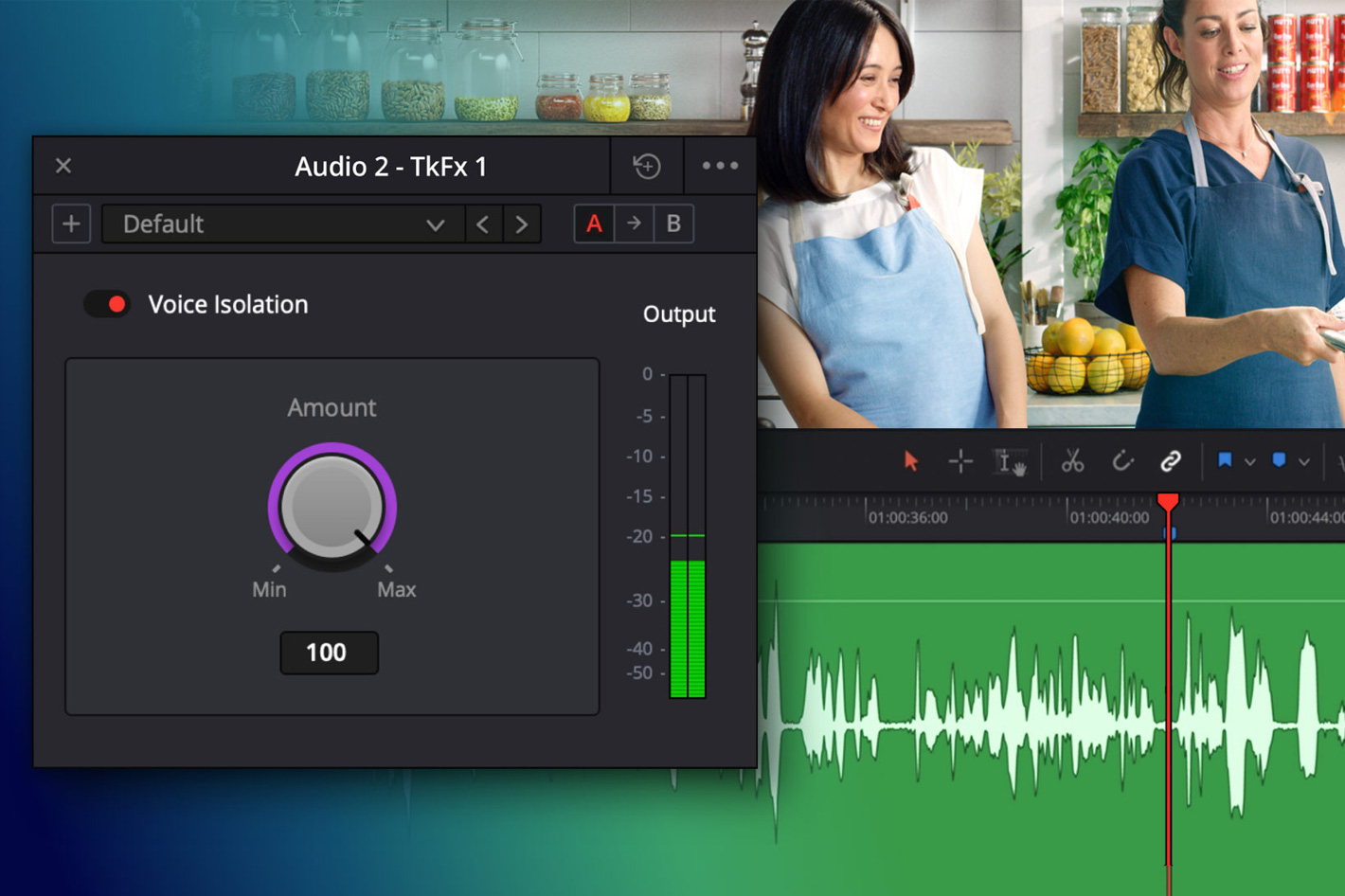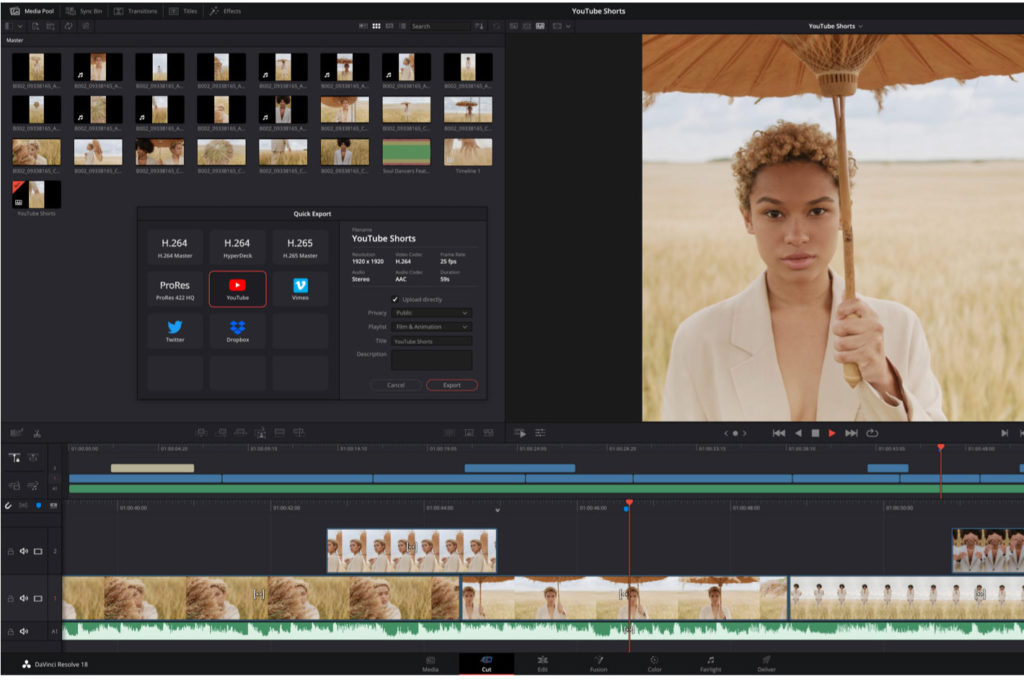 Blackmagic Design announced that more than 60 projects at the 2023 Sundance Film Festival used its products, from digital film cameras to software as part of their workflows.
Blackmagic Design announced that more than 60 projects at the 2023 Sundance Film Festival used its products, from digital film cameras to software as part of their workflows.
It’s no surprise that DaVinci Resolve Studio is one of the most popular software solutions when it comes to editiing movies, so Blackmagic Design puts its NLE on top of the list of products used to create more than 60 projects at the 2023 Sundance Film Festival. Editing, grading, visual effects (VFX) and audio post production software and Blackmagic Cloud are all part of the workflows revealed by the people behind the movies. And as expected, Blackmagic Design digital film cameras were also used to create some of the 60 projects at the 2023 Sundance Film Festival.
“Using Blackmagic Cloud has made major improvements in how I have been able to work during these pandemic days where many long time collaborators have relocated,” said Colorist Natacha Ikoli of Nice Dissolve. “For complex conform with multiple archives and sources, it meant being able to start color a little earlier than we normally would because conform could take place while look set sessions were happening. Blackmagic Cloud also gave me the flexibility to work from Nice Dissolve’s studio, from my home studio in Brooklyn and in France seamlessly, never worrying about the latest versions of the project.”
Some of the Sundance projects that used Blackmagic Design cameras include:
- “A Common Sequence” Co directors Mary Helena Clark and Mike Gibisser used Blackmagic URSA Mini Pro 4.6K and Blackmagic Pocket Cinema Camera 6K Pro digital film cameras;
- “Fantastic Machine” Directors Axel Danielson and Maximilien Van Aertryck used Pocket Cinema Camera 6K Pro;
- “Going to Mars: The Nikki Giovanni Project” DP Derek Wiesehahn used Pocket Cinema Camera 4K and URSA Mini Pro 4.6K;
- “Going Varsity in Mariachi” Sound Recordist Charlie Vela used Pocket Cinema Camera 4K for select sequences;
- “Infinity Pool” DP Karim Hussain used Pocket Cinema Camera 6K for insert and 2nd unit shots;
- “Nam June Paik: Moon Is the Oldest TV” DP Nelson Walker used Pocket Cinema Camera 6K for select interviews;
- “Rye Lane” DP Olan Collardy used Pocket Cinema Camera 4K for select scenes; and
- “Sometimes I Think About Dying” DP Dustin Lane used Pocket Cinema Camera 6K for B unit photography.
DaVinci Resolve Studio continues to support numerous facets of the production and post pipelines, and as Post Producer JP Castel noted, it was used by multiple departments on “My Animal.”
“In addition to grading, editorial used DaVinci Resolve Studio to edit the entire movie, with multiple editors working in various cities and trading DRTs between them seamlessly. We then discovered multi user edit sessions in Blackmagic Cloud, which was a total game changer, and we couldn’t have finished the movie without it,” he said. “We also used Fairlight after picture lock to separate and deliver audio stems via buses and export AFFs to the various audio departments. Fusion was also used extensively for small effects in the film, mostly masking various shots together.”

Some of the Sundance projects that used DaVinci Resolve and DaVinci Resolve Studio for production and post production include:
- “The Accidental Getaway Driver” graded by Houmam Abdallah of AFATECS;
- “Against the Tide” graded by Nicolas Perret at Gump Studios and onlined by Clément Allemand of Lemon Studio;
- “Aliens Abducted My Parents and Now I Feel Kinda Left Out” graded by Drew Tekulve of Paradox Post, with VFX artist Connor Bennett of Kaleidoscope Pictures also using DaVinci Resolve Studio for color keying;
- “All Dirt Roads Taste of Salt” graded by Alex Bickel of Color Collective;
- “Bad Press” graded by Dan Edwards of Changing Frames;
- “Blueback” graded by Olivier Fontenay;
- “Cat Person” graded by Alex Berman of Goldcrest Post, New York;
- “A Common Sequence” graded by Co directors Mary Helena Clark and Mike Gibisser;
- “Divinity” graded by Sofie Borup of Company 3, with Editor Steve Forner of Bonch Post and Editor Kevin Greutert also using DaVinci Resolve Studio for transcoding and VFX pulls;
- “Drift” graded by Christophe Bousquet;
- “Earth Mama” graded by Sam Daley of Light Iron;
- “Eileen” graded by Nat Jencks of PostWorks New York;
- “The Eternal Memory” graded by Pamela Valenzuela of Filmo Estudios with Teranex 2D Processor standards converter used for up conversions and transcoding;
- “Fairyland” graded by Sam Daley of Light Iron;
- “The Family Circus” graded by Mike Howell of Color Collective;
- “Fancy Dance” graded by Raphaëlle Dufosset at Confluential Films;
- “Fremont” graded by Mikey Rossiter of Rare Medium, with DP Laura Valladao also using DaVinci Resolve on set to make in camera shooting LUTs;
- “Girl” graded by Simone Grattarola of Time Based Arts;
- “Going to Mars: The Nikki Giovanni Project” graded by Paul Byrne at Confluential Films;
- “Going Varsity in Mariachi” graded by Samuel Gursky and Jeffrey Chance of Irving Harvey;
- “I Have No Tears, and I Must Cry” graded by J. Cody Baker of Company 3;
- “Infinity Pool” graded by Jim Fleming with DaVinci Resolve Advanced Panel;
- “Invisible Beauty” graded by Natacha Ikoli of Nice Dissolve with DaVinci Resolve Mini Panel and DaVinci Resolve Micro Panel, as well as DaVinci Resolve for iPad for mobile quality control, DaVinci Resolve Speed Editor keyboard, Blackmagic Web Presenter 4K streaming solution and Blackmagic Cloud;
- “It’s Only Life After All” graded by Luke Cahill of Different by Design;
- “Jamojaya” graded by Tom Poole of Company 3, with Taylor Mahony of Tunnel Post also using DaVinci Resolve Studio to grade dailies;
- “Joonam” graded by Natacha Ikoli of Nice Dissolve with DaVinci Resolve Mini Panel and DaVinci Resolve Micro Panel, as well as DaVinci Resolve for iPad for mobile quality control, DaVinci Resolve Speed Editor, Blackmagic Web Presenter 4K and Blackmagic Cloud;
- “Judy Blume Forever” Lead Assistant Editor Elizabeth Le used DaVinci Resolve Studio for transcoding;
- “Kim’s Video” graded by Eric Masunaga of Modulus Studios;
- “King Coal” graded by Luke Cahill of Different by Design;
- “L’Immensità” graded by Andrea Baracca of Flat Parioli;
- “La Pecera” Editor Clara Martínez Malagelada used DaVinci Resolve for transcoding;
- “A Little Prayer” graded by Jane Tolmachyov of Goldcrest Post, New York;
- “Magazine Dreams” graded by Tom Poole of Company 3;
- “Mamacruz” graded by Juan Ventura Pecellín Curiel of Antípodas Film Lab;
- “Mami Wata” graded by Nicolas Lossec;
- “Mirror Party” graded by Samuel Gursky of Irving Harvey;
- “Mutt” graded by Joseph Bicknell of Company 3;
- “My Animal” graded by Sam Gilling and Marc Boucrot with a DaVinci Resolve Mini Panel, with editors Marc Boucrot and Jacqueline Castel also using DaVinci Resolve Studio and Blackmagic Cloud for editing, audio post production and some VFX work;
- “Nam June Paik: Moon Is the Oldest TV” graded by Samuel Gursky and Jeffrey Chance of Irving Harvey;
- “Onyx the Fortuitous and the Talisman of Souls” graded by Tyler Roth of Company 3;
- “Passages” graded by Yov Moor;
- “The Persian Version” graded by Philipp Orgassa of Basis Berlin;
- “Plan C” graded by Brian Hutchings of Different by Design;
- “Radical” graded by Ana Montaño of True Colour Mexico;
- “Rest Stop” graded by Samuel Gursky of Irving Harvey;
- “Rotting in the Sun” graded by Lead Colorist Ernie Schaeffer of Caffeine Post with DaVinci Resolve Studio also used for online editorial and mastering and Blackmagic Cloud used for collaboration;
- “Run Rabbit Run” graded by Brett Manson;
- “Rye Lane” graded by Cheat’s Jack McGinity on behalf of Goldcrest Post and onlined by Jemma Fox;
- “Shayda” graded by Edel Rafferty;
- “Sometimes I Think About Dying” graded by Bradley Greer of Kyotocolor;
- “Still: A Michael J. Fox Movie” graded by Stefan Sonnenfeld and Adam Nazarenko of Company 3;
- “The Stroll” graded by Luke Cahill at Lightwave Post;
- “Talk To Me” graded by Marty Pepper;
- “Theater Camp” graded by Nat Jencks of PostWorks New York;
- “To Live and Die and Live” graded by Paul Byrne at Confluential Films;
- “Twice Colonized” graded by Mathieu Marano of CineGround and Anders Christensen of Kong Gulerod Film, with VFX by CineGround’s Thomas Le Lay;
- “Victim/Suspect” graded by Luke Cahill of Different by Design;
- “You Hurt My Feelings” graded by Nat Jencks of PostWorks New York; and
- “Young. Wild. Free.” graded by Walter Volpatto of Company 3.
Additional Blackmagic Design gear used on Sundance projects includes:
- “Onyx the Fortuitous and the Talisman of Souls” DIT Nick Zarvis used DaVinci Resolve Studio;
- “Radical” DIT Francois Nobécourt used DaVinci Resolve Studio, UltraStudio 4K capture and playback card and Smart Videohub 12×12 router;
- “Shortcomings” DIT Keith Putnam used Smart Videohub 20×20, UltraStudio HD Mini, DaVinci Resolve Studio and Mini Converter SDI Distribution;
- “Sometimes I Think About Dying” Editor Ryan Kendrick used Blackmagic Web Presenter; and
- “Theater Camp” DIT Kimberly Sauer used DaVinci Resolve Studio, UltraStudio 3G Recorders, UltraStudio 3G Monitors and Smart Videohub 12×12.

Filmtools
Filmmakers go-to destination for pre-production, production & post production equipment!
Shop Now













